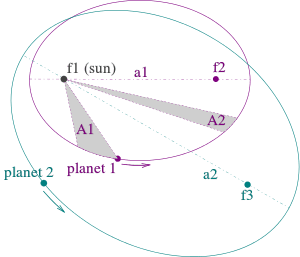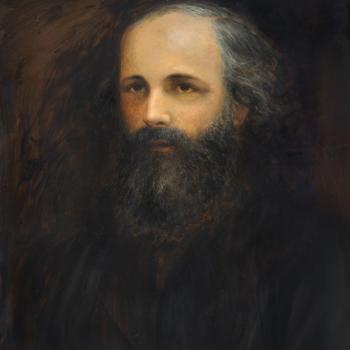
(Image from Wikimedia CC)
I published the article below in the 9 August 2018 issue of the Deseret News:
Atheists and other religious skeptics often portray the European Renaissance (of the 14th to 17th centuries) and the so-called scientific revolution (of the 17th to 18th centuries) as episodes of liberation from the smothering tyranny of medieval religion, which supposedly favored magic over rationality, suppressed scientific thought and thwarted progress. It’s a moral tale, according to which religion and science are adversaries and faith is an obstacle to human advancement
The historical reality, however, is — to put things mildly — quite different from that claim (and, in fact, very different from what I was taught growing up).
A good place to learn about the real history is James Hannam, “The Genesis of Science: How the Christian Middle Ages Launched the Scientific Revolution” (Henry Regnery, 2011). Well-qualified to write his book, Hannam earned a bachelor’s degree in physics at Oxford University and a doctorate in the history of science from the University of Cambridge.
Hannam demonstrates that considerable scientific and technological progress occurred during the European Middle Ages and that such advancements were very commonly achieved by priests. Galileo, who is often considered the founder of modern science, owed far more to his medieval predecessors than he and others have been willing to admit.
Moreover, the golden age of European “magic” wasn’t the supposedly benighted Middle Ages but, rather, the Renaissance. Additionally, to choose one example, Sir Isaac Newton, the iconic titan of the scientific revolution, was a deeply committed theologian and alchemist, as well as a physicist and mathematician.
However, I’ll focus here on Johannes Kepler (1571-1630), who formulated Kepler’s laws of planetary motion and demonstrated that the orbits of the planets around the sun are elliptical rather than circular.
Kepler’s initial goal was to become a priest. Ultimately, he didn’t. But, observes Hannam, “Religion was the central theme of Kepler’s life — both with respect to his own beliefs and the social climate in which he lived. He was an unusually devout man at a time when strong religious views were commonplace.” He “saw his science as a religious duty and wrote as if it were a complicated piece of theology. … Sheet after sheet of calculations (in his notebooks) are punctuated with mystical speculation and prayers.”
Kepler worked in the light of the Copernican revolution, named after Nicolaus Copernicus (1473-1543), the mathematician, astronomer and cathedral official who contended that Earth revolved around the sun, rather than vice versa — an idea actually first proposed by Aristarchus of Samos in the third century before Christ.
Copernicus, Hannam showed, had derived his astronomical ideas from his theology, as well as from the observational data. But his model of the solar system wasn’t completely accurate because he was committed to the notion that the planets move in perfect circles.
Kepler accepted Copernicus’ heliocentric model, but he was horrified that its prediction of the orbit of Mars was off by eight minutes of arc, which is about two-fifteenths of a degree.
“For Kepler,” wrote Hannam, “the most important fact about the world was that God had created it. Like Copernicus, Kepler was convinced that the structure of the heavens had to reflect the perfection of its creator.”
Some skeptics had even begun to argue that genuine knowledge of the movement of celestial objects was impossible, too grand for mere mortals.
“Kepler,” Hannam said, “rejected the defeatism of the skeptics, although his reasons were religious rather than scientific. As far as he was concerned, the heavens must reflect their maker. … There was no imprecision about God and he did not make eight-minute mistakes. Nor was he the capricious sort who would make the heavens into an unsolvable puzzle. If the paths of the planets were ordained by God, then they must be simple and elegant.”
But perfectly circular planetary orbits were a pagan Greek assumption that he could drop without compromising his belief in God’s perfection and rationality.
In this important instance, religion certainly wasn’t an obstacle to science. Kepler’s theology inspired his hypothesis, and he was able to prove it true because of both the more accurate data provided by the great Danish astronomer Tycho Brahe (1546-1601) and his own remarkable mathematical ability.
“Kepler,” wrote Hannam, “cracked the mystery of the planets’ movements because of his faith in God’s creative power.”
“For a long time,” wrote Kepler himself, “I wanted to be a theologian. Now, however, behold how through my effort God is being celebrated through astronomy.”












